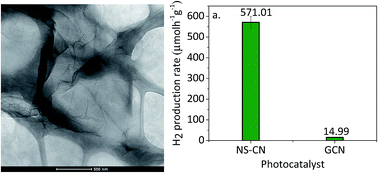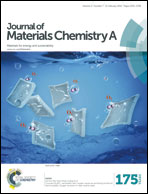Surface activated carbon nitride nanosheets with optimized electro-optical properties for highly efficient photocatalytic hydrogen production†
Abstract
Incomplete polycondensation of the precursor, structural destruction and blue-shift of 2D nanosheets of carbon nitride are nowadays the serious problems. Therefore, optimization of the structural and electro-optical properties of carbon nitride, and reduction of its dependency on the high loading of the Pt cocatalyst needed for enhanced photocatalytic performance is of urgent necessity for sustainable and low-cost hydrogen production from water. To address this issue, we report sub-nanometer-thin carbon nitride nanosheets, which are fabricated by a combined three-step method including co-polymerization, surface activation and exfoliation. The resultant nanosheets are structurally very robust and photocatalytically highly efficient as evidenced by 38 times enhancement in their hydrogen production rate as compared to the pristine carbon nitride, with 100 times smaller loading of Pt as a co-catalyst. The extended visible-light absorption, suppressed charge carrier recombination, enhanced charge separation, low over potential and high surface area are the prominent reasons behind this unprecedented improvement.


 Please wait while we load your content...
Please wait while we load your content...